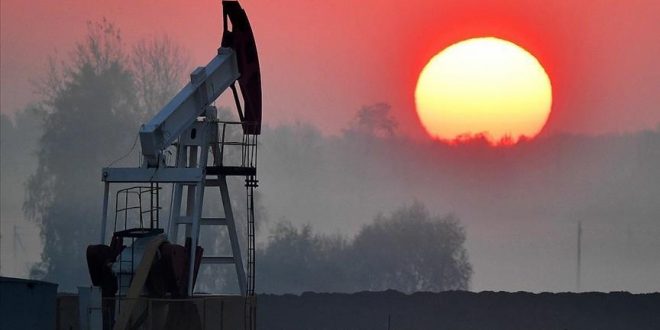After a decade of losses and shareholder frustration, the U.S. shale patch is generating record amounts of cash flows and is earning record profits this year as oil prices soar while firms prioritize returns to investors.
The public independent U.S. shale producers already had a blockbuster first quarter, with many generating record cash flows and profits and vowing to increase shareholder returns after years of corporate losses and little payback to investors. Moreover, analysts say the second quarter will be even better for the shale patch.
The first earnings results announced at the end of last week and earlier this week suggest that Q2 will be the best quarter for shale profits ever. Independent producers are joining Big Oil—including U.S. supermajors ExxonMobil and Chevron—in reporting all-time high earnings and boosting payouts to shareholders through higher dividends and stepped-up share buybacks.
The record cash flows and profits are unlikely to go unnoticed by the Biden Administration, which has been chastising domestic oil producers for rewarding shareholders instead of “lowering the costs at the pump for Americans.”
Phenomenal Cash Flows
Combined free cash flow at the top 28 independent U.S. oil producers is set to exceed $25 billion for the second quarter, estimates compiled by Bloomberg showed at the start of the shale earnings season. Free cash flow is set to be over $100 billion for the full-year 2022, more than double the FCF the shale patch generated last year. This year’s projected FCF will also be nine times higher than the combined annual cash flows between 2018 and 2020, per Bloomberg Intelligence data.
“Even if the cost structure is trending higher, the amount of free cash flow generated will be phenomenal,” Paul Cheng, a New York-based analyst at Scotiabank, told Bloomberg.
Production in the U.S. shale patch is also growing, but at a slower pace than in the 2018-2019 run-up to the pandemic. That’s due not only to spending discipline where firms prefer to trim debt and repay shareholders instead of growing production at all costs, as they did for nearly a decade before COVID created a new crisis and a new reality. Galloping costs, sold-out fracking equipment and crews, and supply-chain delays and bottlenecks are also reasons for slower U.S. shale production growth this year despite $100 a barrel oil.
The latest Dallas Fed Energy Survey showed that the business activity index in the energy firms operating in Texas, northern Louisiana, and southern New Mexico jumped in the second quarter to the highest level in six years, but costs continued to escalate, and supply chain delays were worsening.
Shale firms note that there is intense inflationary pressure on costs amid supply chain bottlenecks, high inflation, and growing wages in a tight market for skilled workers.
“Those Returns Are Fantastic”
Yet, some companies say that in terms of returns, the high oil prices more than offset inflation.
“While we believe the industry is experiencing overall inflation of between 15% and 20%, our full year drilling and completion costs are forecast to increase by only about 8.5% year-over-year,” Hess Corporation’s chief operating officer Greg Hill said on the company’s earnings call last week.
“If you look at our portfolio, we’ve got 2,100 or more drilling locations that generate great returns at a $60 WTI. So obviously, at current prices, those returns are fantastic, right? And so certainly, the movement in the oil price from a return standpoint is outstripping any inflationary effects,” Hill added.
Hess Corp’s core shale operations in the Bakken are generating significant amounts of cash flow these days, the executive said. At $60 oil, the Bakken generates more than $1 billion of free cash flow for Hess, Hill said, noting that with current much higher oil prices, the company’s position in the North Dakota basin “becomes this massive cash annuity for the portfolio.”
This week, Devon Energy and Diamondback Energy both reported on Monday solid Q2 earnings and increased returns to shareholders. Devon Energy raised its fixed-plus-variable dividend to $1.55 per share, up by 22 percent from the previous quarter, and raised its full-year 2022 production forecast by 3 percent to a range of 600,000 – 610,000 Boe per day due to “better-than-expected well performance year-to-date and the impact from a bolt-on acquisition in the Williston Basin.” The company raised its upstream capital guidance to a range of $2.2 billion to $2.4 billion for 2022, up from $2.1 billion, and expects its capital to be fully funded from operating cash flow, which is expected at nearly $9 billion at current strip pricing.
Diamondback, for its part, generated a record $1.3 billion in free cash flow for Q2, exceeding last quarter’s prior FCF record by 35%. The Board approved a $2-billion increase to Diamondback’s share repurchase authorization to $4.0 billion.
“Beginning this quarter, we have committed to return a minimum of 75% of our Free Cash Flow to stockholders,” chairman and CEO Travis Stice said.
U.S. shale firms are finally reaping the benefits of triple-digit oil prices as they continue to prioritize returns to shareholders and reduction of debts to going into more debt in order to post production records.

 Iran Energy News Oil, Gas, Petrochemical and Energy Field Specialized Channel
Iran Energy News Oil, Gas, Petrochemical and Energy Field Specialized Channel



